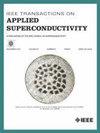Charging Speed Optimization of Non-Insulation REBCO Coils by Tuning Turn-to-Turn Resistivity Distribution
IF 1.7
3区 物理与天体物理
Q3 ENGINEERING, ELECTRICAL & ELECTRONIC
引用次数: 0
Abstract
The non-insulation (NI) high-temperature superconducting coils are widely used due to their high current-carrying density, high thermal stability, and self-protection features. However, in engineering applications, the primary challenge associated with NI coils is charging delay, alongside two additional issues: 1) In a closed-loop NI coil, once the persistent Current Switch (PCS) transitions to the superconducting state, the redistribution of azimuthal current complicates the determination of the steady-state operating current and 2) Under specific turn-to-turn resistivity distributions, a significant reverse azimuthal current will occur during charging, increasing the risk of coil damage. These issues stem from the uneven distribution of turn-to-turn current in NI coils. Therefore, in this article, an ideal spatial distribution of turn-to-turn resistivity is proposed through analytical equations, ensuring that the azimuthal current remains equal during the charging process, thereby accelerating the charging and discharging speed, suppressing the process of azimuthal current redistribution after the closed-loop coil PCS enters the superconducting state, quickly entering a stable closed-loop operation state, and avoiding the occurrence of large reverse azimuthal current during charging.求助全文
约1分钟内获得全文
求助全文
来源期刊

IEEE Transactions on Applied Superconductivity
工程技术-工程:电子与电气
CiteScore
3.50
自引率
33.30%
发文量
650
审稿时长
2.3 months
期刊介绍:
IEEE Transactions on Applied Superconductivity (TAS) contains articles on the applications of superconductivity and other relevant technology. Electronic applications include analog and digital circuits employing thin films and active devices such as Josephson junctions. Large scale applications include magnets for power applications such as motors and generators, for magnetic resonance, for accelerators, and cable applications such as power transmission.
 求助内容:
求助内容: 应助结果提醒方式:
应助结果提醒方式:


